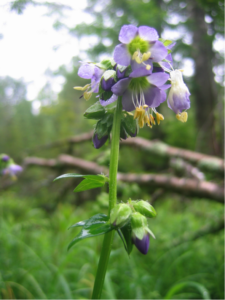Ecological Research
Although my position at UVM is instructional and I do not host graduate students, I am ecologically interested in researching how humans impact natural systems.
I often host undergraduate research projects in Plant Biology. Most recently, in 2019-2020, Mariah Cronin (Environmental Studies, 2020 graduate) and I analyzed the capacity for sunflowers and hemp to detoxify urban soils of heavy metals, especially lead from lead-based paint in the Old North End neighborhood in Burlington, Vermont.
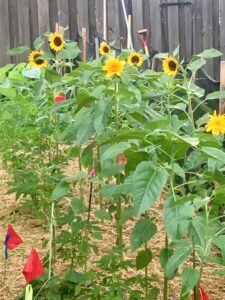
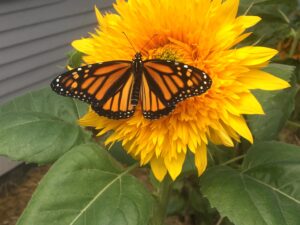
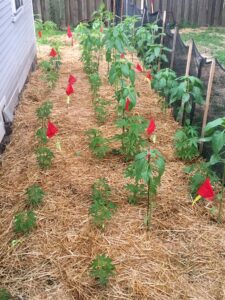
Sunflowers (Helianthus annus) and hemp (Cannabis sativa) are known phytoremediators.
However, our research demonstrated that, when grown in polycultures, they are collectively more effective at phytoremediating the soil of lead than when grown in isolation. Mariah is using the project to inform the larger community, specifically the most socio-economically and culturally diverse Old North End area of Burlington, of low-cost, effective strategies clean soils of lead, a neurotoxic heavy metal.
My sustainable agriculture research (2012-2014) focused on the future of growing cold-hardy varieties of rice (Oryza sativa) in cold climates, such as the Northeast. In collaboration with Vermont farmers, we studied how variable water availability affected rice plant vigor, survival, panicle formation, maturation date, and total grain yield of 4 temperate rice strains during the 2012 growing season. The project results have informed northeastern farmers how to utilize subprime agricultural land (i.e., on dairy farms) to grow rice and increase farm diversity and income in a changing climate.
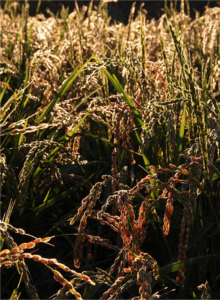
Photo courtesy of Ben Falk, Whole Systems Design
My postdoctoral research program (2008-2011), in collaboration with the USDA Forest Service and the University of Vermont, explored various ecological and anthropogenic impacts on populations of rare plant Polemonium vanbruntiae in the Green Mountain National Forest.
For my doctoral research with Dr. Alison K. Brody at the University of Vermont Department of Biology (2003-2008), I examined how various ecological and evolutionary factors affected rare plant persistence in wetland habitats. Specifically, I tested how pollinators, herbivores, and habitat type influenced long-term population dynamics for globally threatened plant species, Polemonium vanbruntiae (Eastern Jacob’s ladder). I used a combination of field experiments and ecological modeling to discern the factors most significantly affecting extinction risk for these rare plant populations.
Polemonium vanbruntiae occurs in montane wetland regions throughout the Appalachian mountain range in eastern U.S. and Canada.
Publications:
Hill Bermingham L. and Brody, A.K. 2011. Pollen source affects female reproductive success and early offspring traits in the rare endemic plant Polemonium vanbruntiae (Polemoniaceae). Plant Species Biology 26, 244–253.
Hill Bermingham, L. 2010. Habitat type and deer herbivory influence long-term population dynamics of a rare wetland plant. Plant Ecology, 210, 359 – 378.
Hill, L.M., Brody, A.K., Tedesco, C.L. 2008. Mating strategies & pollen limitation in globally threatened perennial Polemonium vanbruntiae. Acta Oecologica, 33, 314-323.

